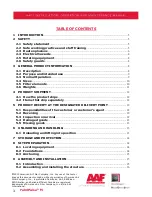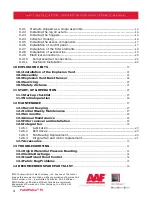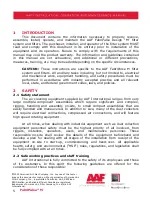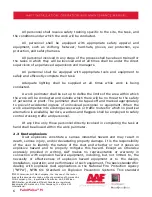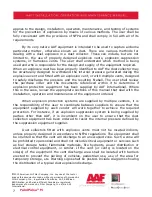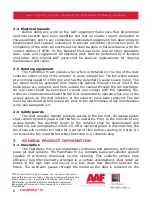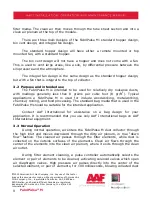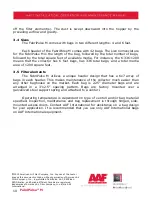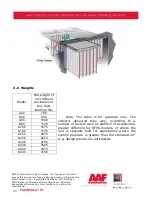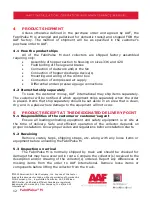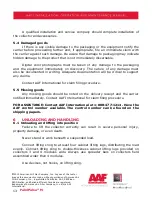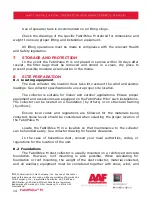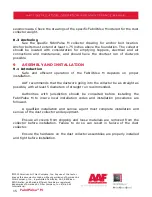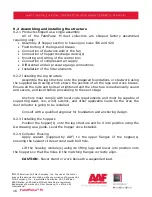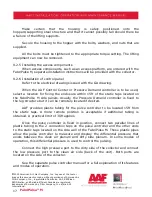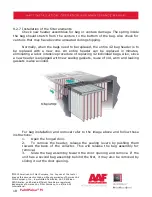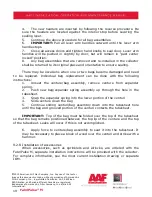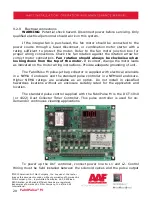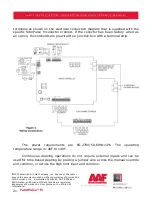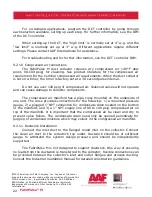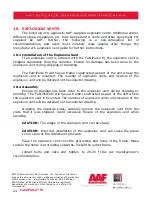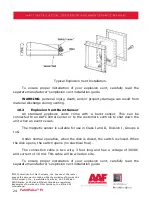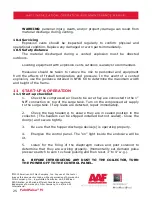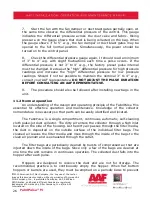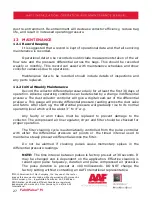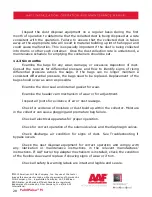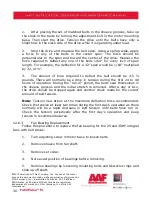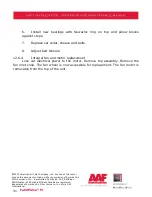
17
FabriPulse
®
M
©
2015 American Air Filter Company, Inc. Any use of the text or
images this document contains, without permission of American Air
Filter Company, Inc., is prohibited. FabriPulse, AAF, REDClean,
REDFiltration, and Reliable Efficient Durable are registered
trademarks of American Air Filter Company, Inc. d/b/a AAF
International.
Make certain that the housing is safely positioned onto the
hoppers/supporting steel structure and that it cannot possibly fall should there be
a failure of the lifting supports.
Secure the housing to the hopper with the bolts, washers, and nuts that are
supplied.
All the bolts must be tightened to the appropriate torque setting. The lifting
equipment can now be removed.
9.2.5
Installing the access components
When access components, such as an access platform, are ordered with the
FabriPulse M, separate installation instructions will be provided with the collector.
9.2.6
Installation of control panel
Refer to the electrical drawings issued with the GA drawing.
When the AAF Control Center or Pressure Demand controller is to be used,
select a location for fixing the enclosure within 15ft of the static taps located on
the FabriPulse M side panels. Usually the Pressure Demand controller is fixed to
the leg structure but it can be remotely located if desired.
AAF provides plastic tubing for the pulse controller to be located 15ft from
the static taps. A more remote position is acceptable if additional tubing is
obtained. A practical limit of 30ft applies.
Once the pulse controller is fixed in position, connect two parallel lines of
plastic tubing to the 2 connection taps on the pulse controller and the other ends
to the static taps located on the side wall of the FabriPulse M. These plastic pipes
allow the pulse controller to measure and display the differential pressure that
exists between the clean air plenum and dirty side plenum. In some modes of
operation, this differential pressure is used to control the pulsing.
Connect the high pressure port to the dirty side of the collector and connect
the low pressure port to the clean air side (back of the unit). Both ports are
located on the side of the collector.
See the separate pulse controller manual for a full explanation of its features
and modes of operation.

